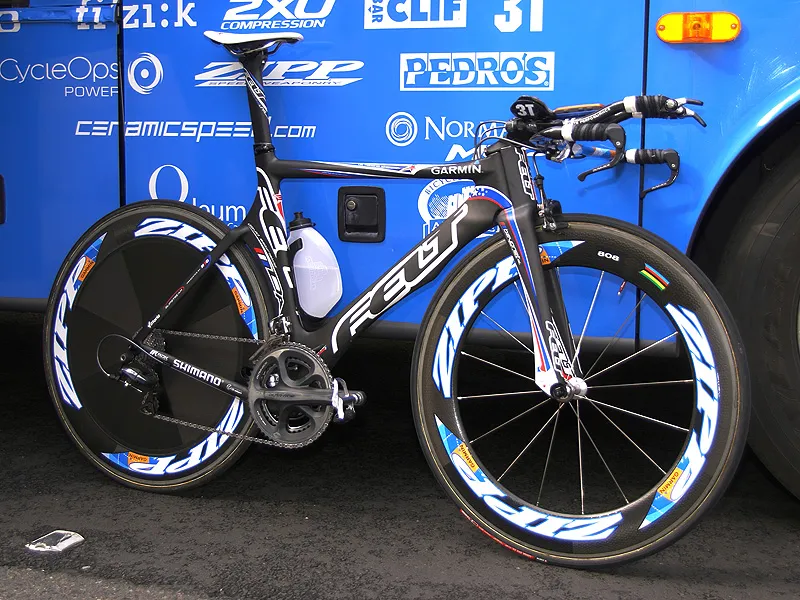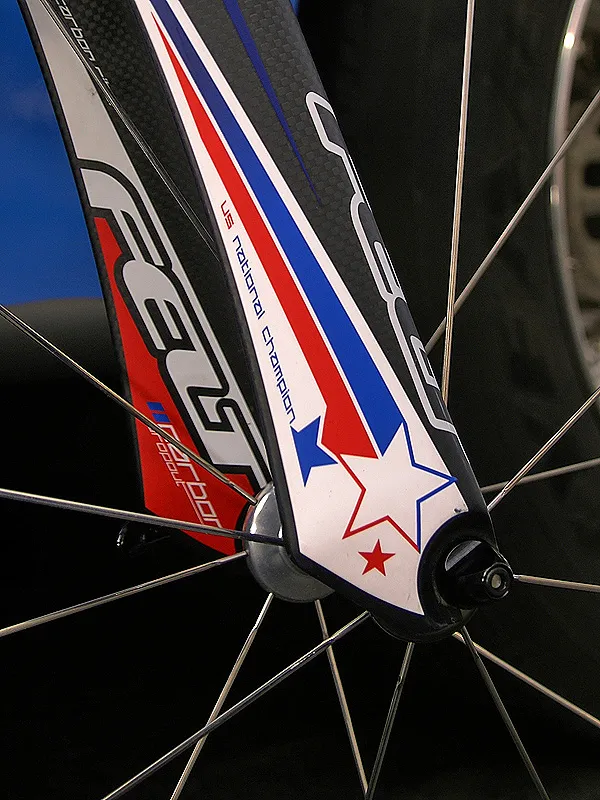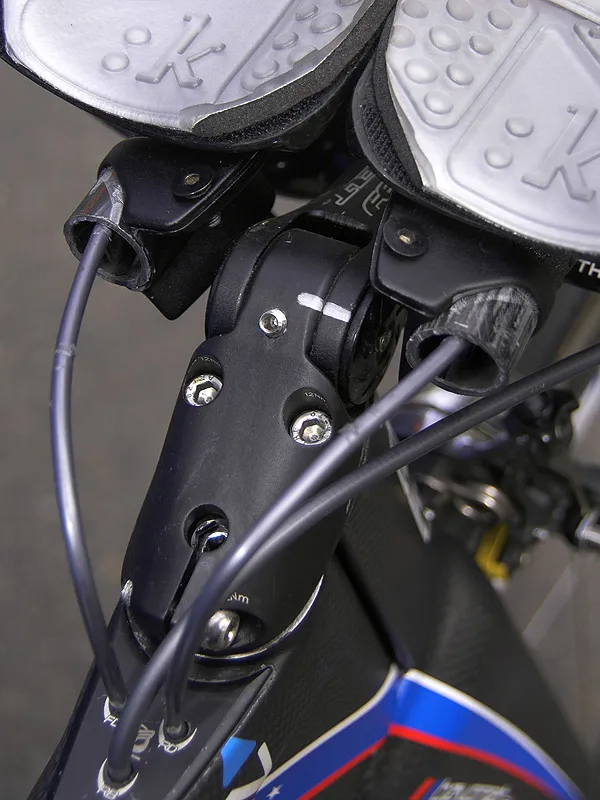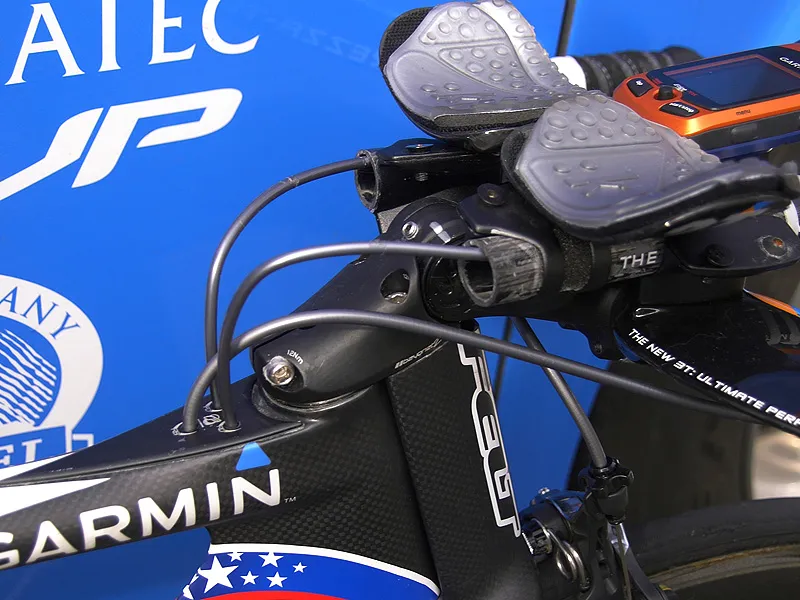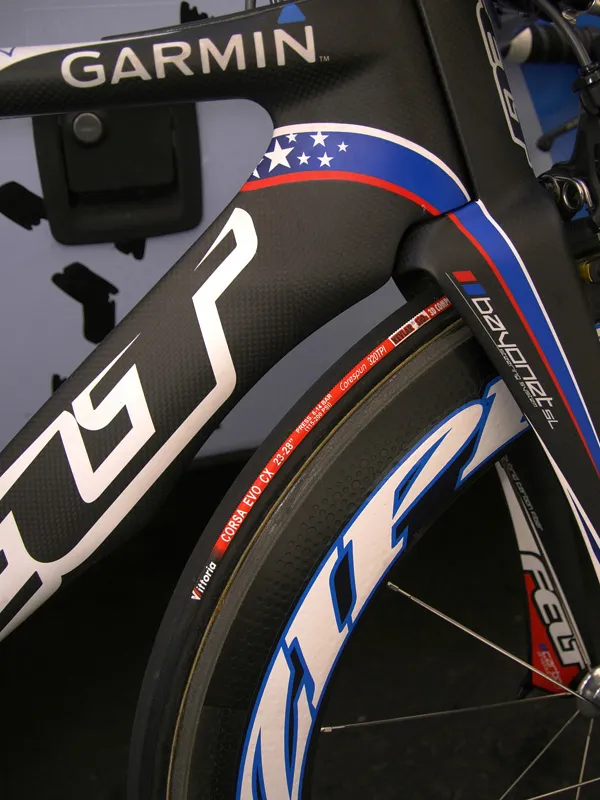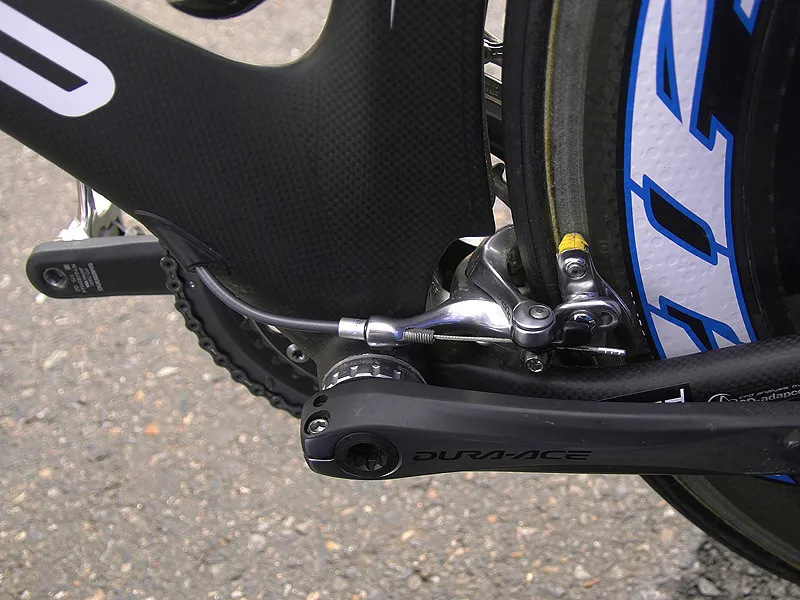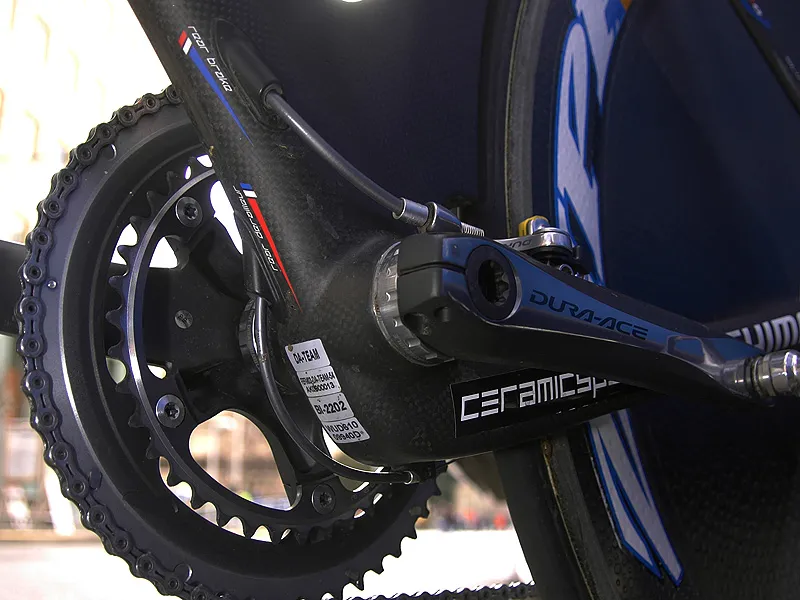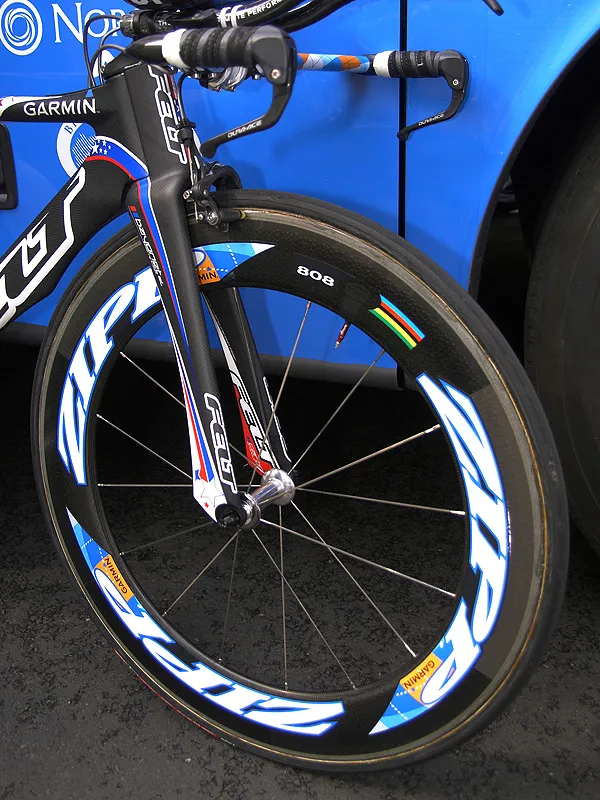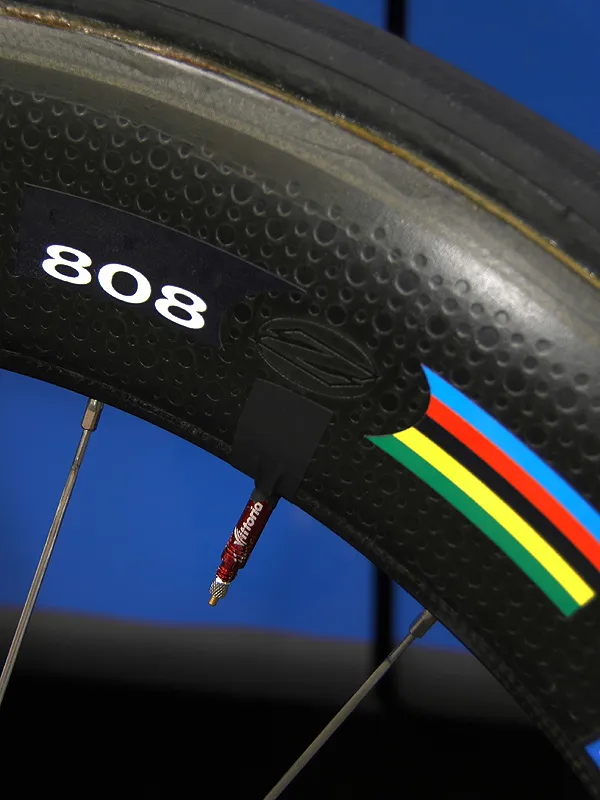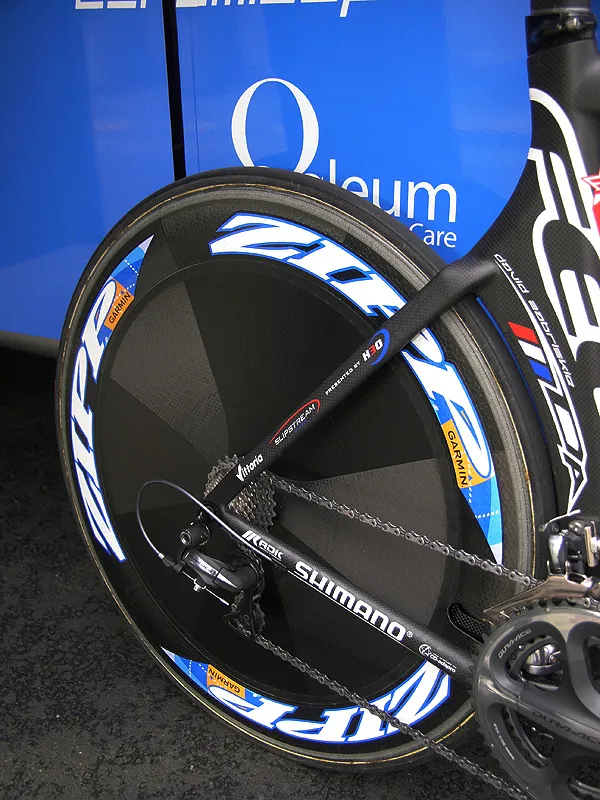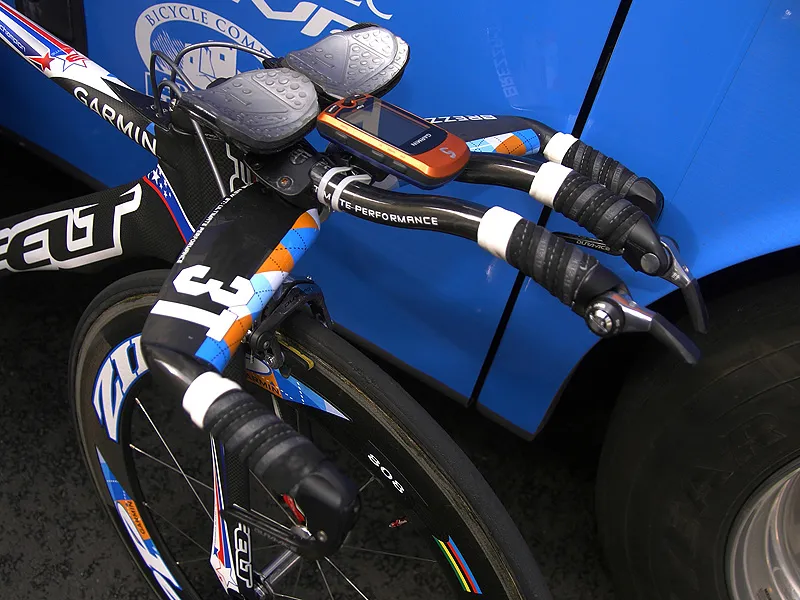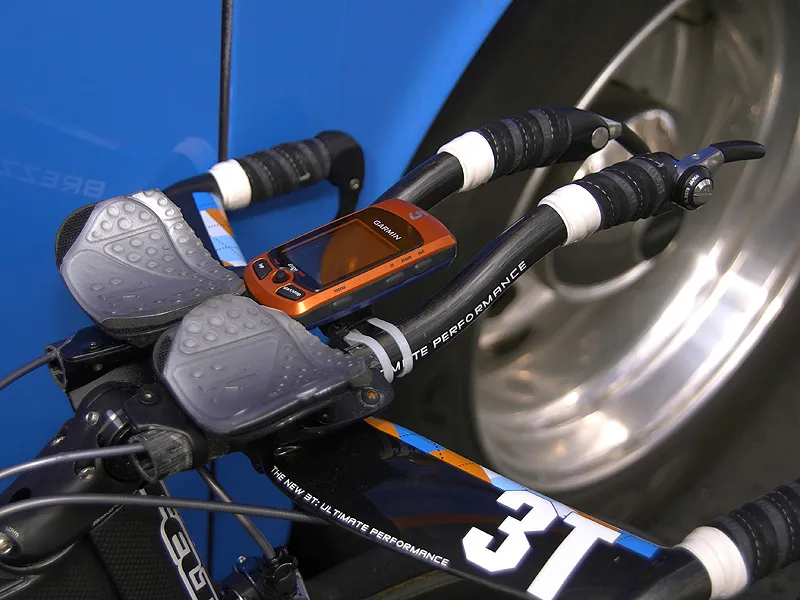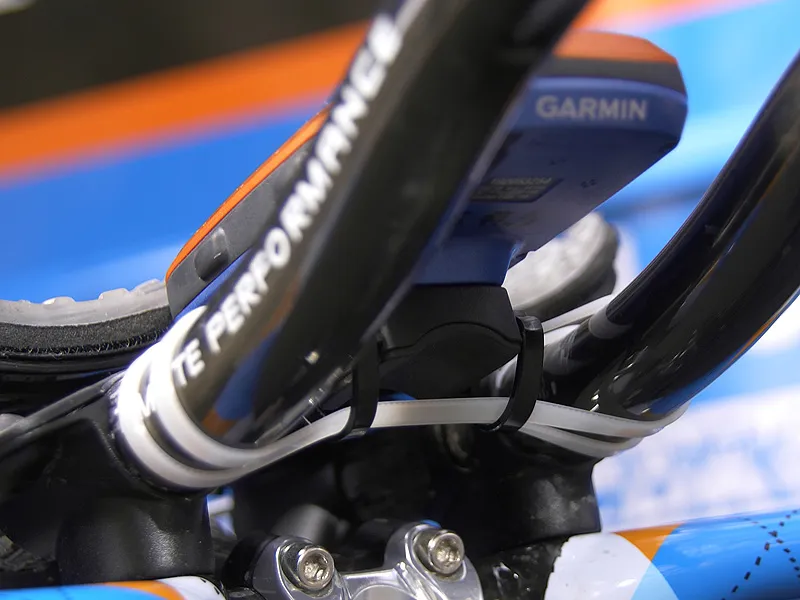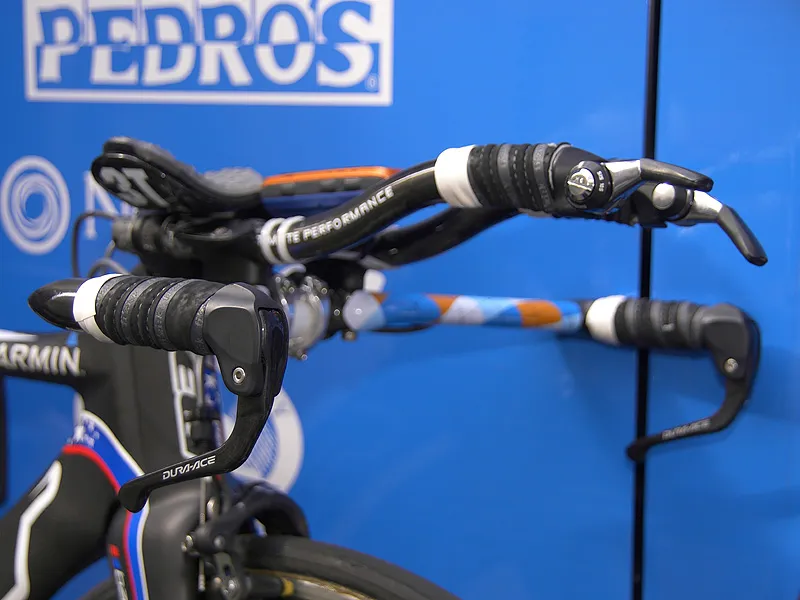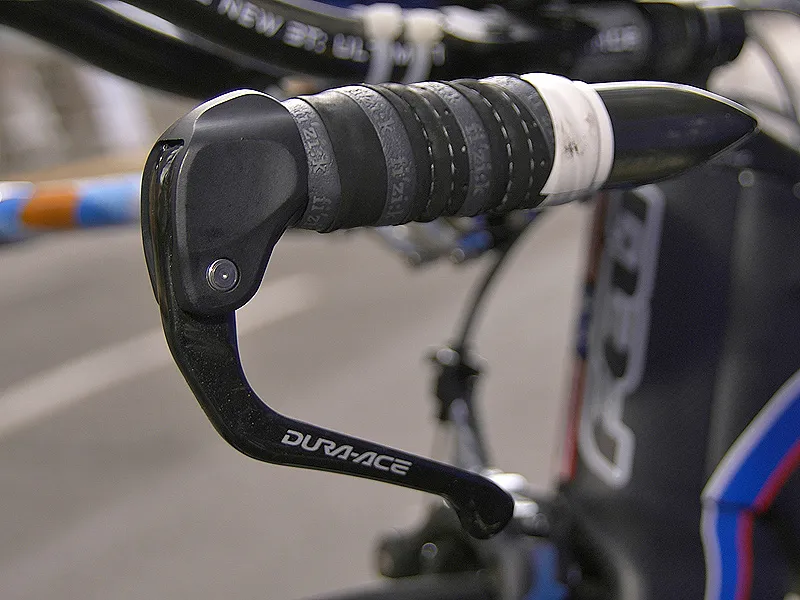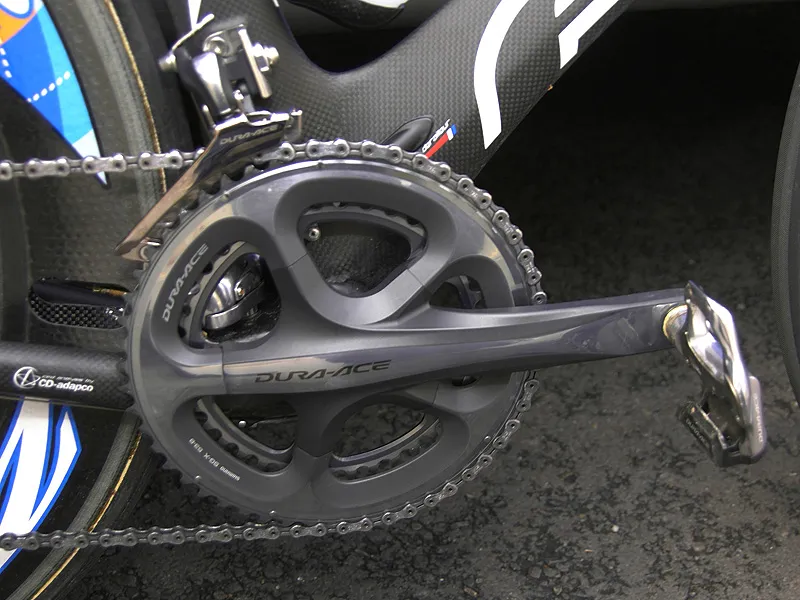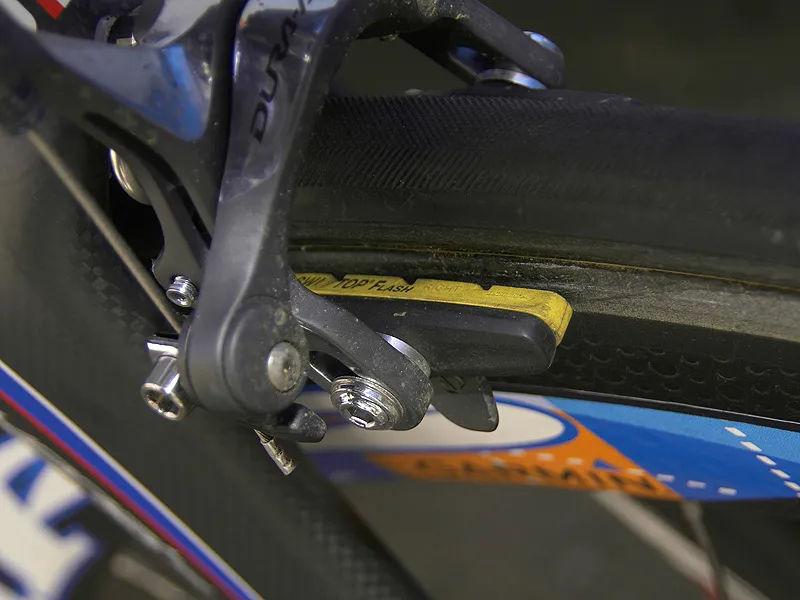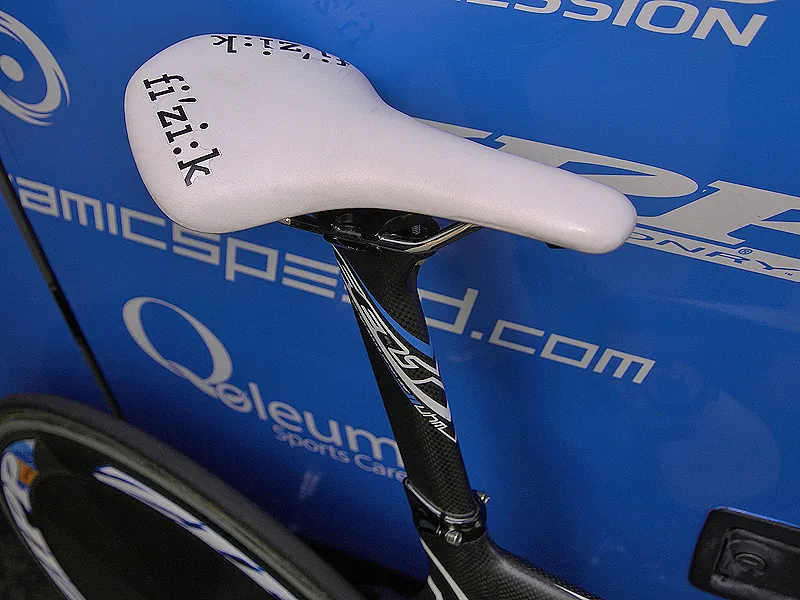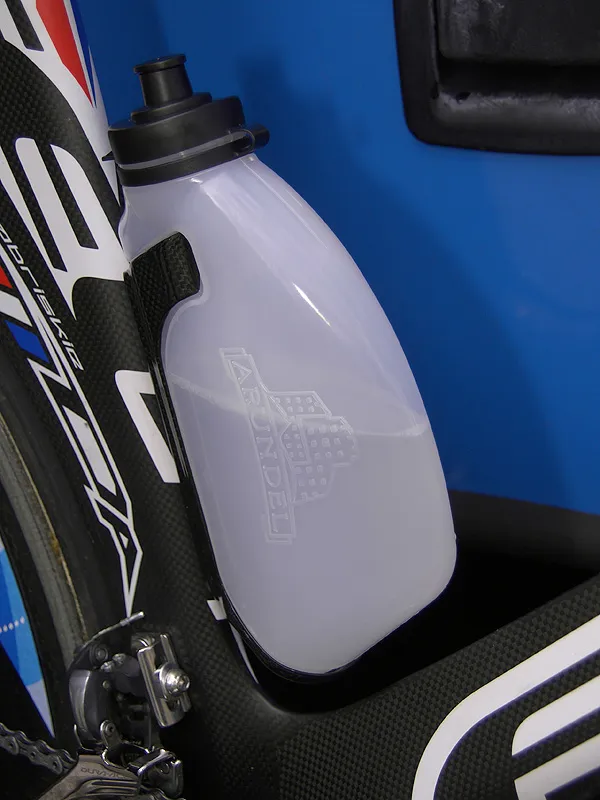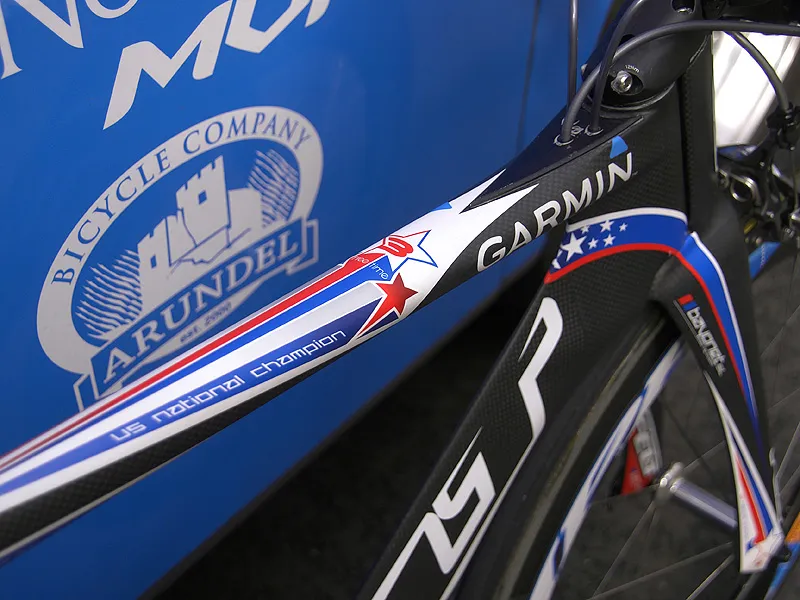David Zabriskie hasn’t earned his reputation as one of the best time trial riders in the world by being slow.
He has earned four US national time trial titles (2004, 2006-2008), a silver medal at the International Cycling Union (UCI) world time trial championships (2006), and time trial victories in all three grand tours, including the fastest Tour de France time trial ever recorded (stage 1, 2005) with an average speed of 54.545km/h (33.89mph) over 24.5km (15.2mi).
His position on a time trial bike stands in marked contrast to his famously quirky personality and to watch him gracefully hunkered down over a set of aero bars at speed is to watch the very epitome of what a time trialist should look like: long, low, fluid, graceful. In fact, his position is so perfect that former sponsor Cervélo actually had a plastic life-sized mockup of him built to aid in wind tunnel testing of its bikes.
Zabriskie has since moved on to the Garmin-Slipstream squad and on to a new bike, the Felt DA. Just like Zabriskie, the DA looks every part like the dedicated time machine it is.
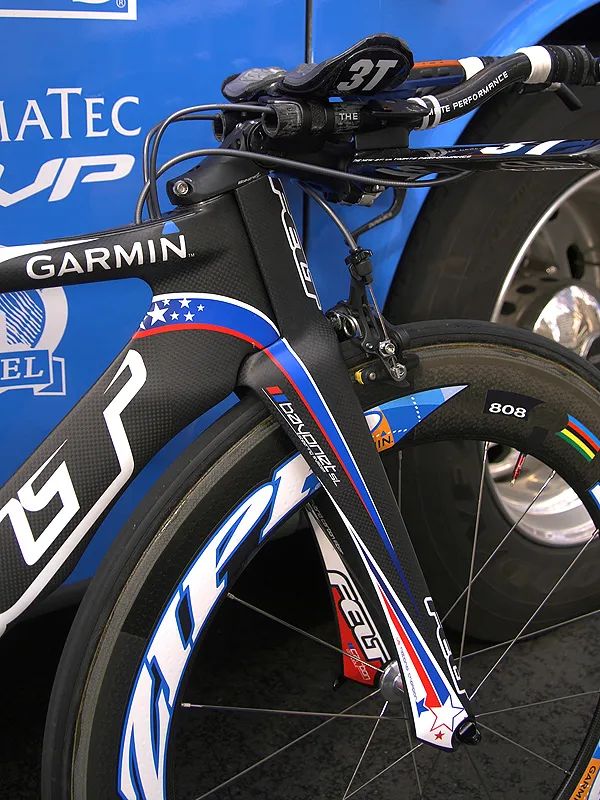
The DA naturally uses aero-profile cross-sections for all tubes exposed to the wind but Felt has also gone several steps further to reduce drag and smooth airflow. The most prominent feature is the Bayonet II fork whose external steerer tube combines with the narrow 1-inch head tube to effectively create a much deeper aspect ratio than the UCI would allow with a single frame member.
According to Felt, the Bayonet II system – which also integrates a low-profile stem up top – accounts for a substantial 10 percent drag reduction over a standard front end while also being stiffer for better handling and braking.
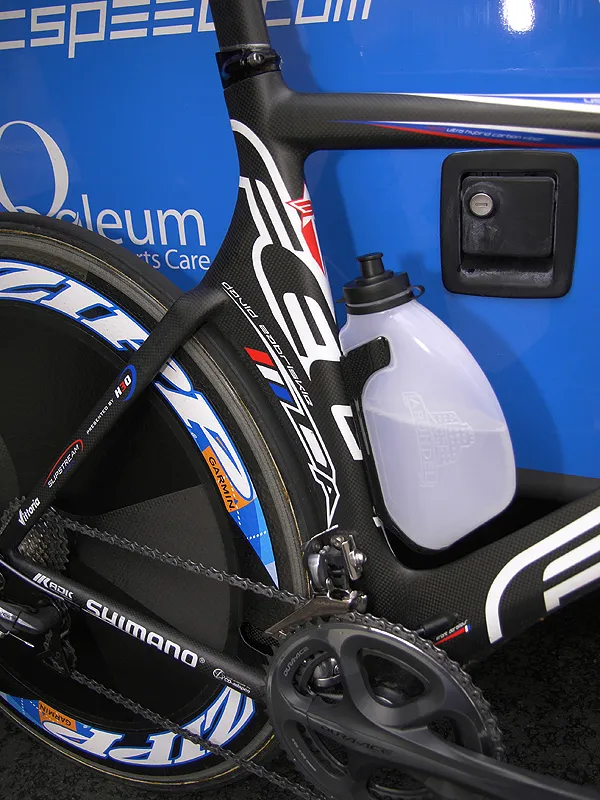
In addition to the especially expansive rear wheel cutout, the down tube is also partially profiled and lowered to smooth airflow coming off of the front wheel. Down below, Felt has moved the rear brake from the seat stays to atop the chain stays just behind the bottom bracket where the air is already turbulent. Felt claims a 4 percent drag reduction as a result and the dropped chain stay position also makes for a longer down tube for additional rear wheel shielding. Cables are routed internally to minimize drag and enter the frame at the top tube behind the stem.
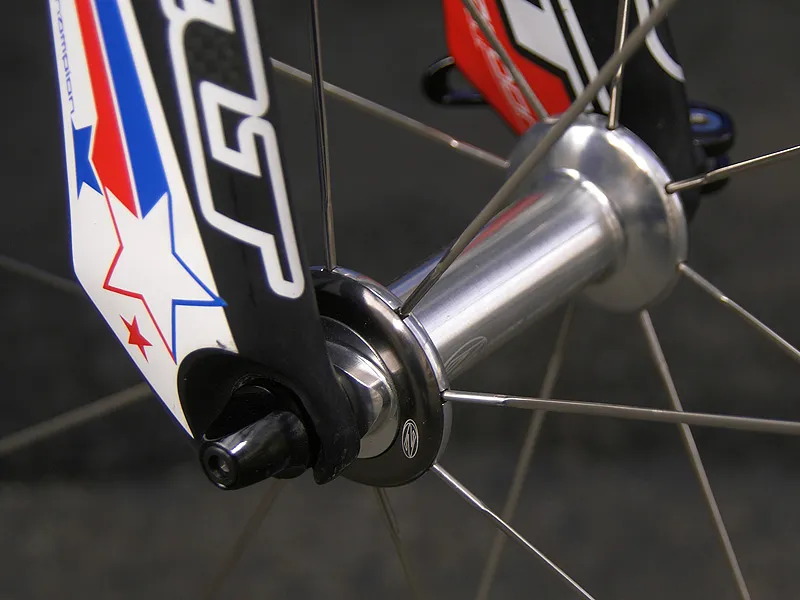
Componentry includes speedy Zipp 800 deep-section front and 900 flat disc rear carbon tubular wheels, Shimano’s latest Dura-Ace 7900 group and its fresh carbon fiber TT brake levers, a new TT-specific Ares saddle from fi’zi:k and integrated aero bars from new team sponsor 3T. Ceramic bearings from new official sponsor CeramicSpeed – Zabriskie had used them before but in an unofficial capacity – are fitted to the bottom bracket cups and Zipp supplies its own ceramic bearings for the hubs.
The team’s switch in aero bars has required some fairly drastic changes up front as 3T currently offers its Brezza bar in a single, relatively flat drop. Zabriskie’s adjustable Bayonet II stem is now angled sharply downward in order to get the relatively flat base bar low enough but other riders – including team leader Christian Vande Velde – have had to resort to an additional hinged section to get even lower. Felt says specially modified special team-only front ends are pending so we can likely expect some changes come the Giro d’Italia.
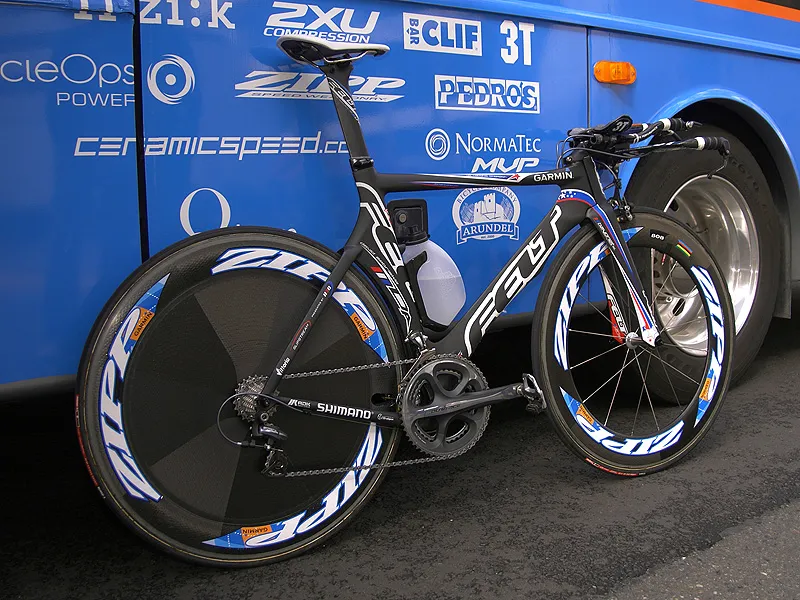
In spite of the DA’s massive amounts of surface area, it’s actually quite light as well. Claimed weight for the frame and fork is just 1500g and total weight for Zabriskie’s complete bike is just 7.6kg (16.8lb) – not quite down to the UCI limit but still exceptionally light for a dedicated time trial rig.
The Tour of California is winding down but Zabriskie and several others are still within striking range of the leader board. Zabriskie currently stands in third place on general classification, just 28 seconds behind overall leader Levi Leipheimer of Astana. Can Zabriskie close the gap over the 24km (15 mile) course? We’ll know soon enough.
Catch today's Amgen Tour of California Stage 6 live at Cyclingnews.com. Follow BikeRadar's Twitter postings at www.twitter.com/bikeradar.
Update: Zabriskie finished second to Leipheimer's winning time of 30:39, in 30:48.
Full specification
- Frame: Felt DA UHC-Nano, 54cm
- Fork: Felt Bayonet II UHC-Nano
- Front brake: Shimano Dura-Ace BR-7900 w/ SwissStop Yellow King pads
- Rear brake: Shimano Dura-Ace BR-7900 w/ SwissStop Yellow King pads
- Brake levers: Shimano Dura-Ace TT BL-TT79
- Front derailleur: Shimano Dura-Ace FD-7900-F
- Rear derailleur: Shimano Dura-Ace RD-7900-SS
- Shift levers: Shimano Dura-Ace bar-con SL-BS79
- Cassette: Shimano Dura-Ace CS-7900, 11-23T
- Chain: Shimano Dura-Ace CN-7900
- Crankset: Shimano Dura-Ace FC-7900, 175mm, 53/39T
- Bottom bracket: Shimano Dura-Ace SM-FC7900 w/ CeramicSpeed hybrid ceramic bearings
- Front wheel: Zipp 808 tubular w/ ceramic bearings
- Rear wheel: Zipp 900 tubular
- Front tyre: Vittoria Corsa Evo-CX tubular, 23mm
- Rear tyre: Vittoria Corsa Evo-CX tubular, 23mm
- Bars: 3T Brezza LTD, 40cm (c-c)
- Stem: Felt Bayonet II, 120mm x -18º
- Headset: Felt Bayonet 1" integrated
- Tape/grip: fi'zi:k Dual:Tape
- Pedals: Shimano Dura-Ace SPD-SL PD-7810
- Seat post: Felt 3.1
- Saddle: fi'zi:k Ares
- Bottle cages: Arundel Chrono
- Computer: Garmin Edge 705
- Total bike weight: 7.6kg (16.8lb)
Critical measurements
- Rider height: 1.82m (6'0")
- Rider weight: 70kg (154lb)
- Seat tube length, c-t: 540mm
- Saddle height, from BB (c-t): 785mm
- Tip of saddle nose to C of bars (next to stem): 625mm
- C of front wheel to top of bars (next to stem): 476mm
- Top tube length: 545mm
